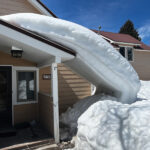Take a look around … self-tapping and self-drilling screws are used everywhere to connect virtually anything. Most of the time these fasteners are not even noticed. But because the fastener is a such an important component of any connection, specifying a fastener that meets the minimum design loads and is optimized for performance is critical. The following tips will assist you in confidently specifying the correct fastener and ensuring the best performance possible for any application.
Ensure the best fastener performance for any application
Substrate Identification for Fastener Selection
Identify the substrate material and its thickness. Select a fastener that is designed for your specific substrate: metal, wood or concrete. The most popular fasteners used for attaching sheeting to steel substrates are self-drilling screws designed to drill and tap steel in a single operation. They are available in a wide variety of diameters, lengths and materials. Self-drilling screws have specific point types that perform in a specific thickness range. Thin connections like panel laps require a small drill point like a DP1 type.
Structural connections utilize up to a DP5 drill point for attaching up to 1/2-inch-thick steel. Sharp, or gimlet point self-tapping screws are commonly used in wood, thin metals and composites. Follow the screw supplier’s recommendations for attaching to your particular substrate. Using the incorrect type of fastener for the substrate can result in difficulty installing the fastener or failure of the connection. Also note the substrate material when selecting a fastener material and finish.
Choose a Fastener Material and Finish
Select a fastener material that matches the materials you are connecting when possible and avoid contact between dissimilar metals to minimize risk of galvanic corrosion if exposed to moisture. To help in your selection, the Metal Construction Association and some fastener suppliers publish a fastener selection guide for attachment of various types of metal roof and wall panels. The environment in which the fastener is exposed to affects the rate of corrosion of the screw immensely.
Corrosion is minimized when a fastener is not subjected to moisture or harsh chemicals. Corrosion is accelerated in coastal regions or industrial areas. Select a fastener that matches the corrosion resistance of the materials it is connecting. For exterior applications, choose a long-life coated screw (1,000 hours minimum to red rust per ASTM B117), long-life head screw (stainless steel- or zinc-capped), or a stainless steel screw. Do not use zinc-plated screws for exterior application unless they have a minimum of 0.0005-inch-thick zinc. Thinly coated zinc plated screws can rust quickly. For treated lumber and wood with high amounts of tannins, check that the finish of the fastener will be compatible.
Exceed Load Requirements
Screws must meet particular specifications for material, thread size and manufacturing quality. Pullout, pullover and shear are commonly tested physical attributes. Because of the use of these standards the strength of an equal size screw should not vary wildly from supplier to supplier. The strength of the screw increases as you go up in diameter. Review your supplier’s technical data for the fastener you are considering. Carefully analyze the connection and select the appropriately sized screw that exceeds all of the load requirements. Do not be afraid to ask for additional data when loads are not available for your specific application.
Length Based on Attachment Thickness
Determine the overall thickness of the materials you want to connect. Select a fastener length that allows at least three full threads to extend beyond the substrate. Check the drill point length to be sure the fastener completes all the drilling before thread tapping occurs. This will eliminate jacking of the panel and point failure. For dimensional wood substrates like 2x lumber, select a screw length to embed full threads a minimum of 1 1/2-inch into the wood structure.
Choose the Right Supplier
Use a fastener supplier who can assist you in selecting the appropriate screw if needed. Do not use a fastener if there is no available technical data. The right supplier can furnish the required data upon request and is ready and willing to answer any questions you have.
Josh Krohn is engineering services manager at Triangle Fastener Corp., Pittsburgh. To learn more, visit www.trianglefastener.com or call (800) 486-1832.








